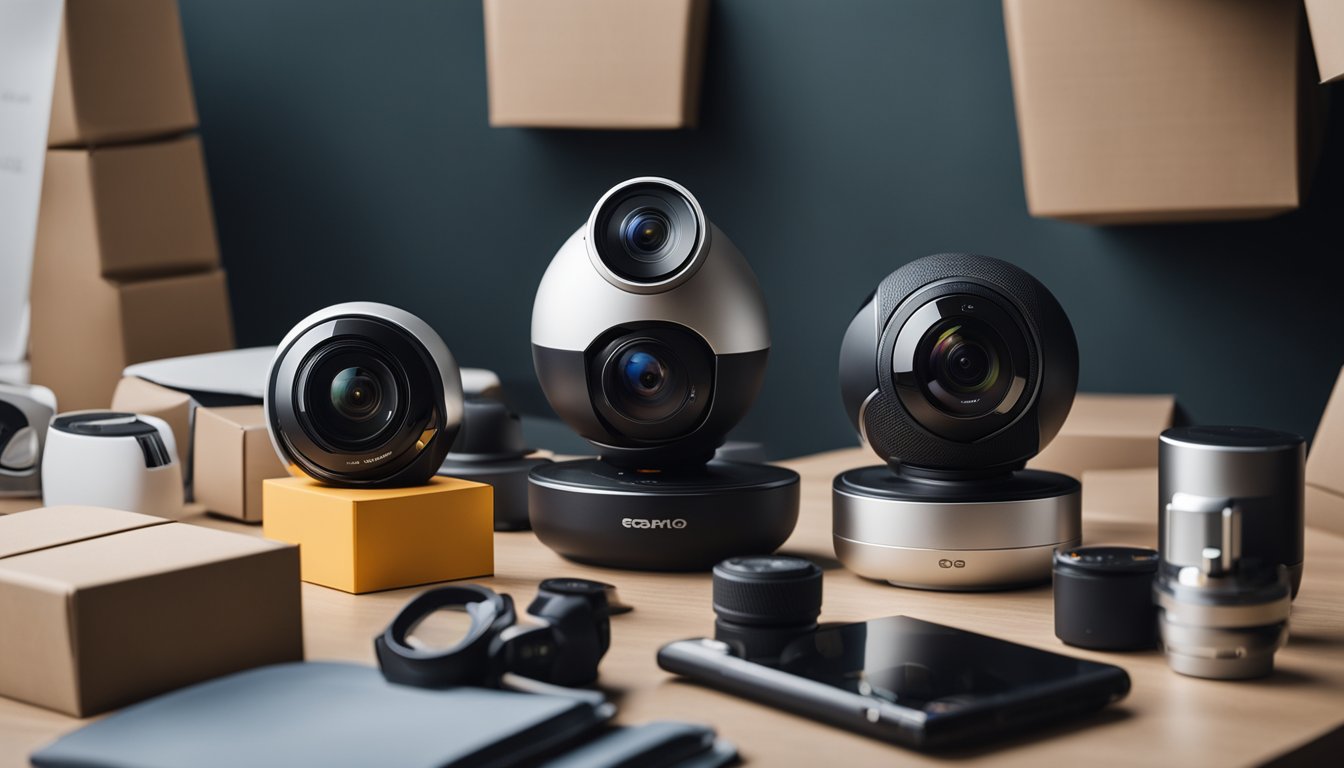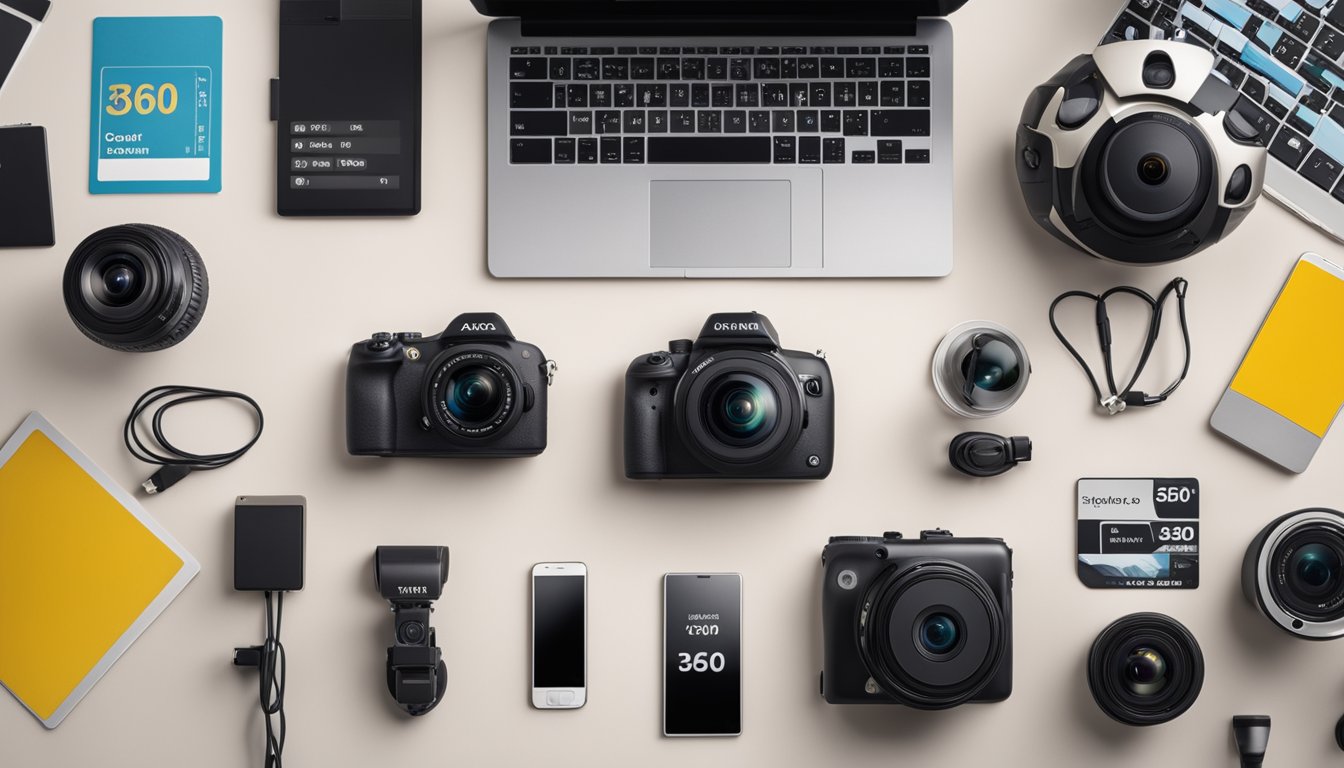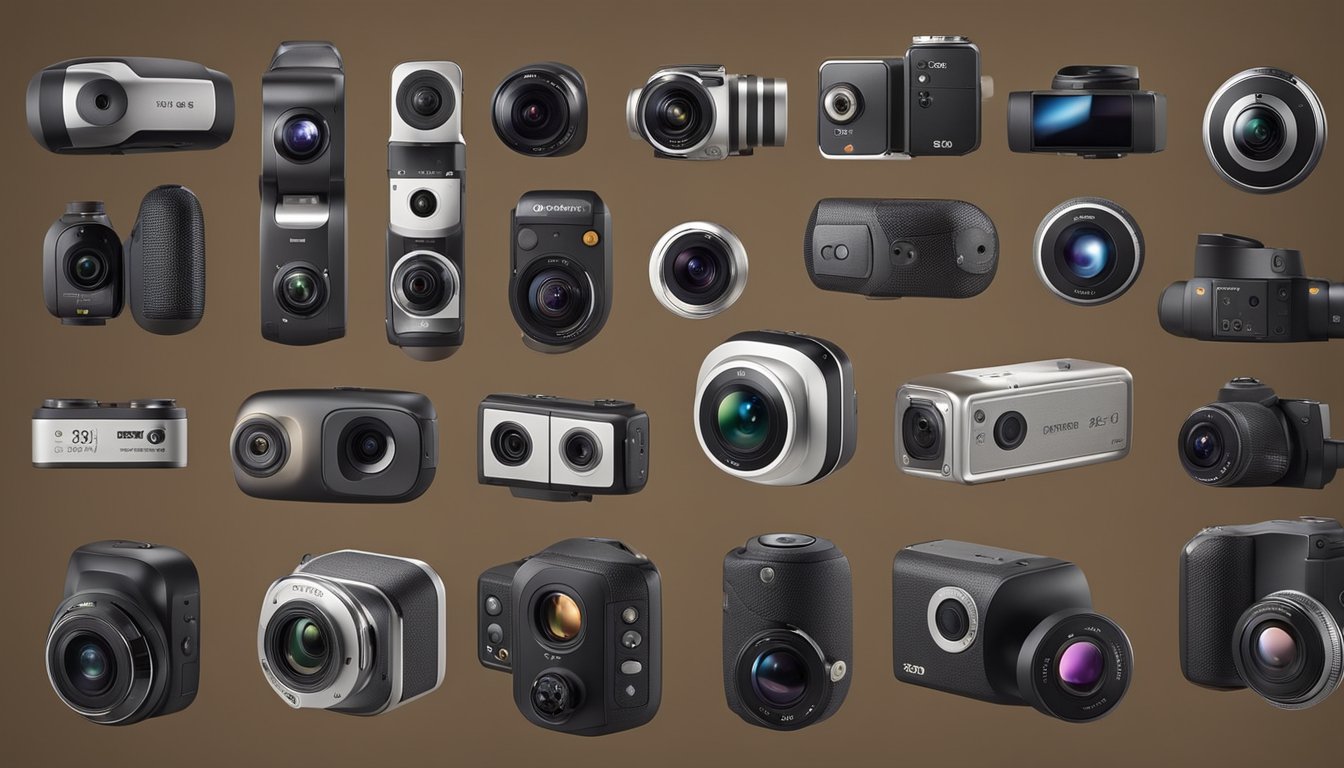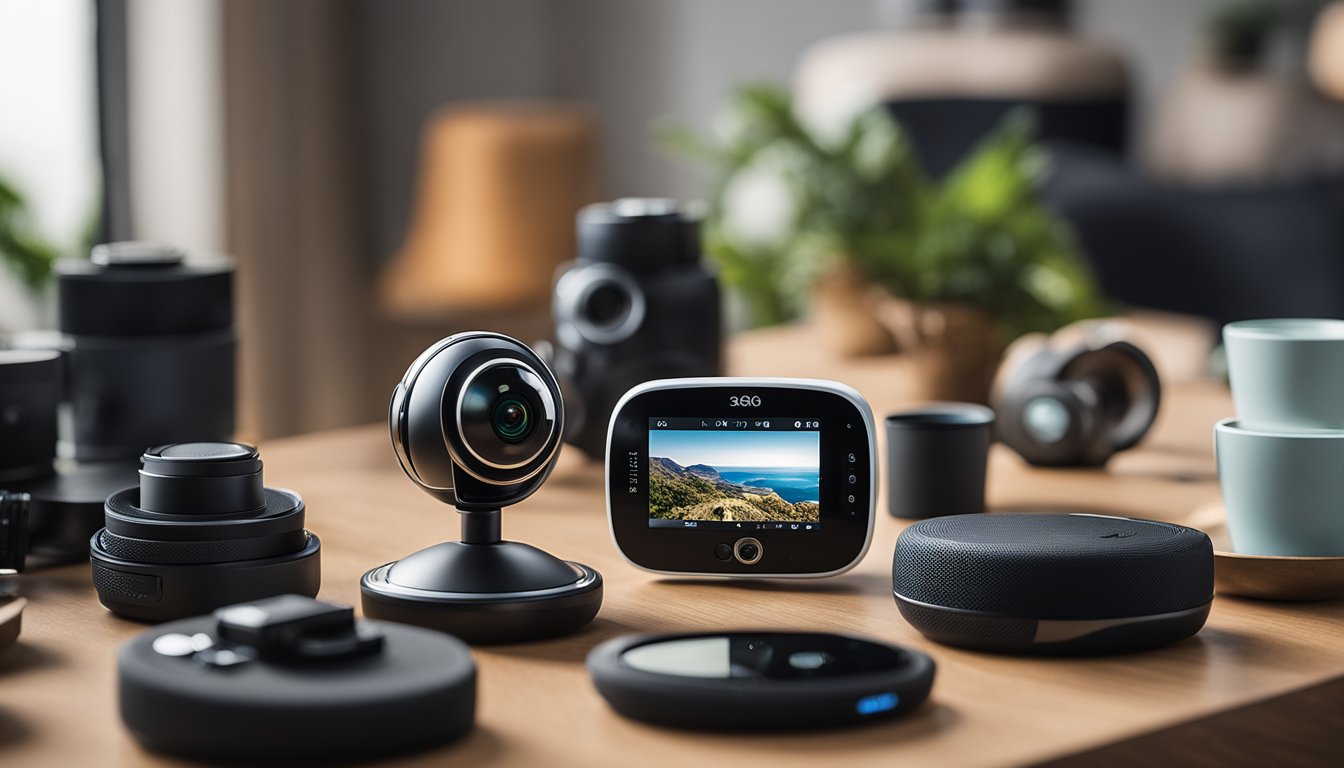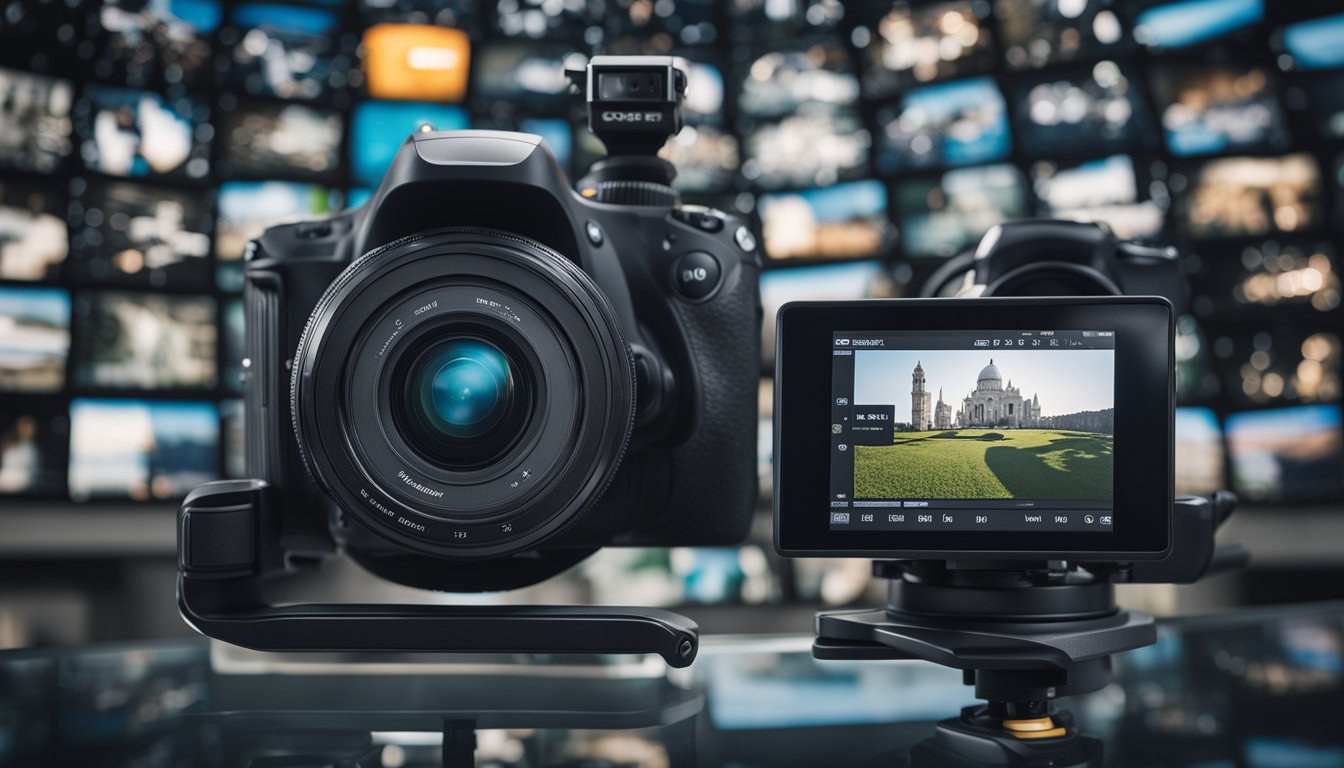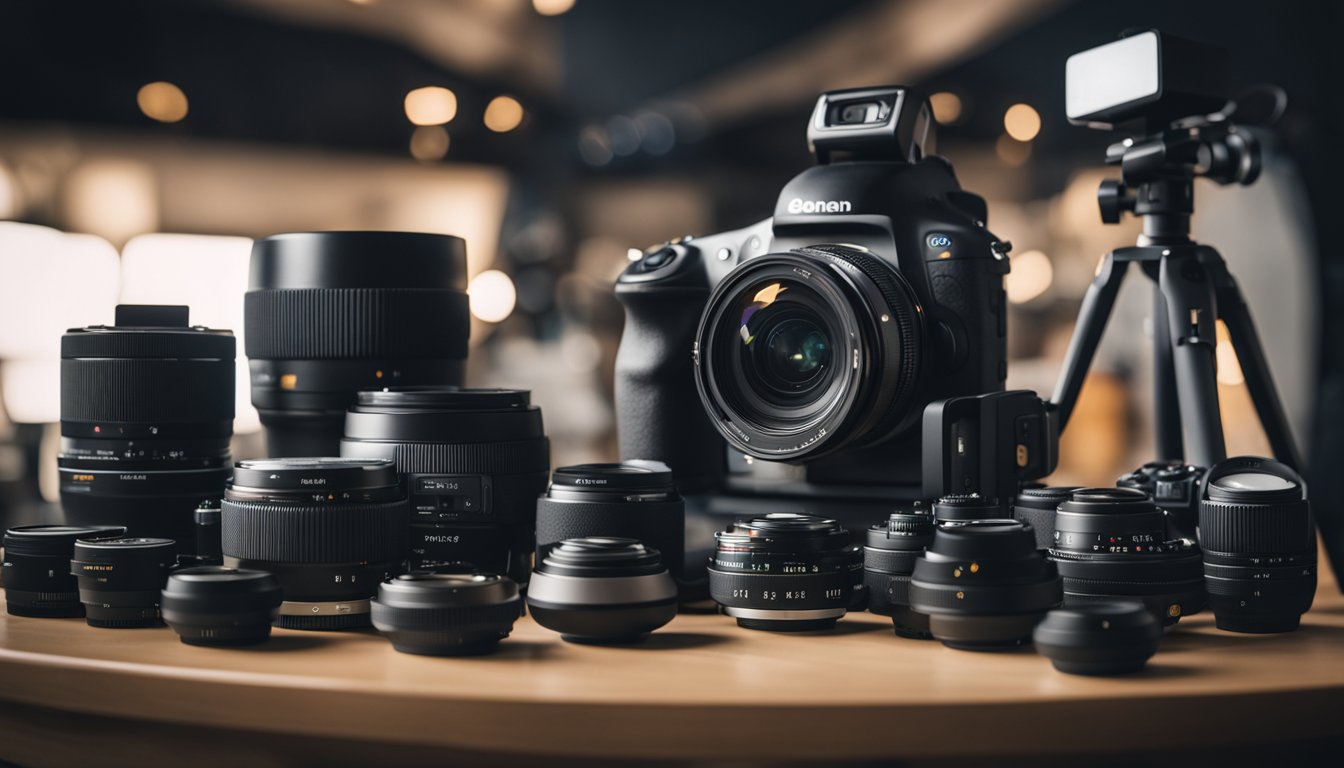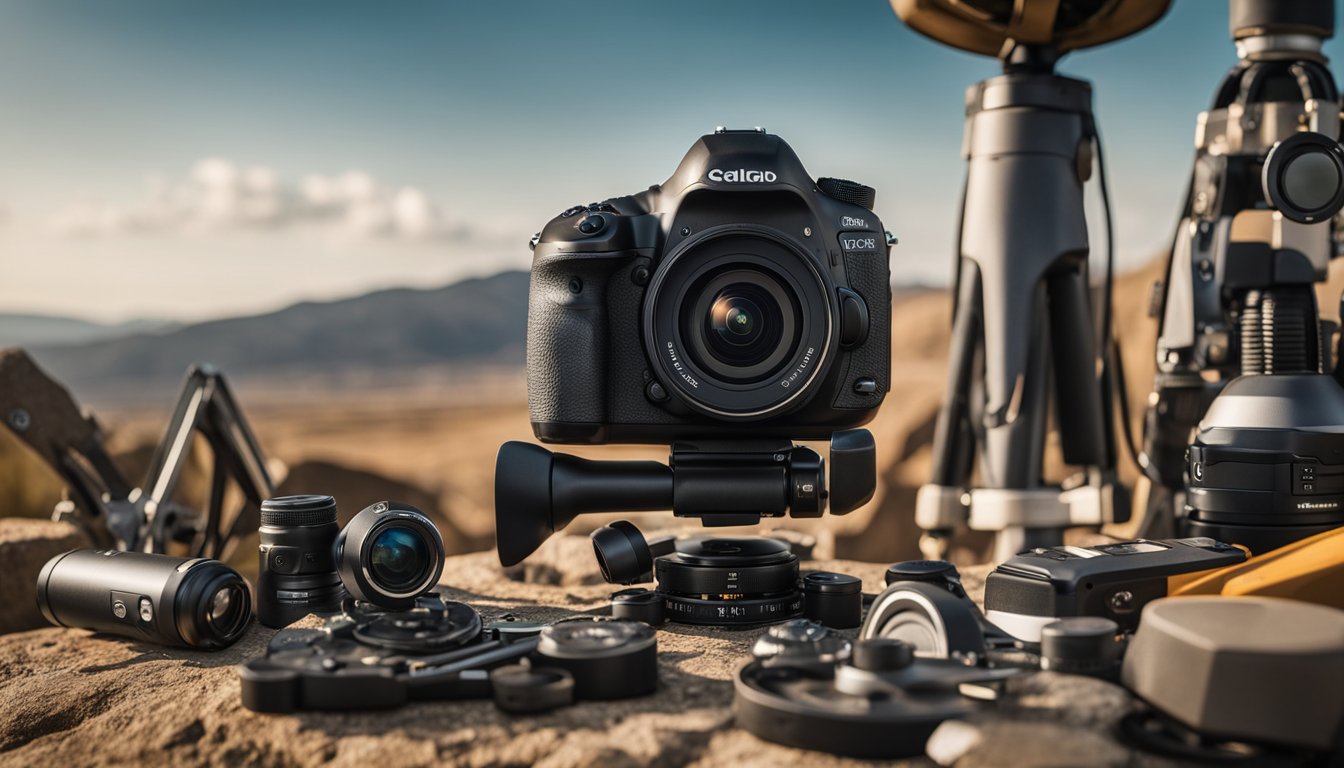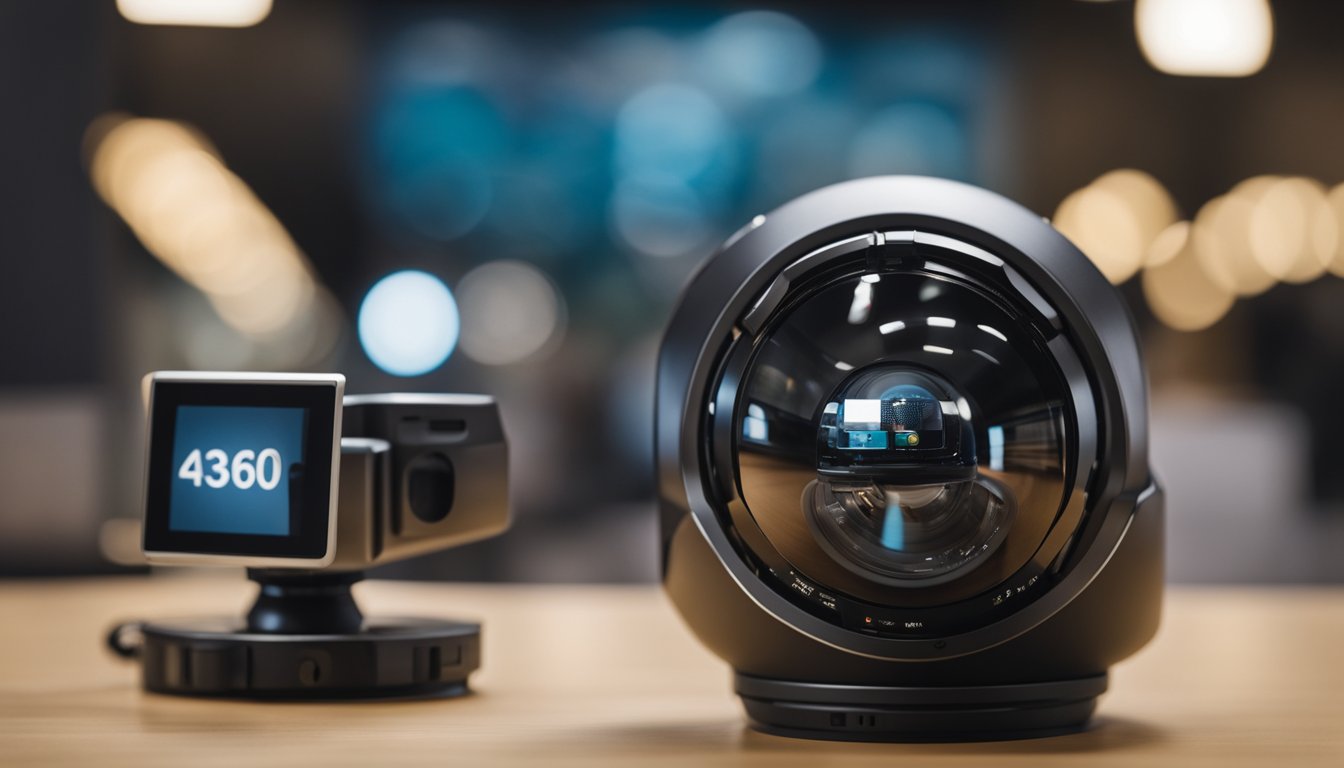If you are interested in capturing immersive photos and videos, you may be wondering how much a 360 camera costs. The answer to this question varies depending on several factors, including the camera’s features, brand, and build quality. In this article, we will explore the different price ranges of 360 cameras and provide you with helpful information to choose the right camera for your needs.
Before we dive into the price ranges of 360 cameras, let’s first understand what 360 cameras are. These cameras capture a full 360-degree view of your surroundings, allowing you to create immersive photos and videos that can be viewed in virtual reality. They are perfect for capturing panoramic landscapes, sports events, concerts, and other activities where a regular camera may not be able to capture the full experience. With that said, let’s explore the different price ranges of 360 cameras.
Key Takeaways
- 360 camera prices range from budget-friendly to professional-grade models.
- Factors that affect the price of a 360 camera include brand, features, and build quality.
- When choosing a 360 camera, consider your budget and the camera’s features for your specific use case.
Understanding 360 Cameras
If you are looking for a camera that can capture everything around you, then a 360 camera might be the perfect choice for you. These cameras have become increasingly popular in recent years, and for good reason.
Features and Lens Technology
360 cameras are equipped with multiple lenses that capture a full 360-degree view. These lenses work together to create a seamless image or video that captures everything around you. One of the key features of 360 cameras is their ability to capture immersive video that allows the viewer to look around in any direction.
The lenses used in 360 cameras come in various shapes and sizes. Some cameras have fisheye lenses, while others use ultra-wide-angle lenses. Fisheye lenses are great for capturing everything in a single shot, while ultra-wide-angle lenses are better for capturing more detail in each shot.

Resolution and Image Quality
When it comes to 360 cameras, resolution and image quality are crucial factors to consider. The higher the resolution, the more detail you can capture in each shot. However, higher resolution cameras can also be more expensive.
Image quality is also important when it comes to 360 cameras. You want to make sure that your camera can capture high-quality images and videos that are clear and sharp. Some cameras also have features like dynamic range that can help improve the overall quality of your shots.
Overall, 360 cameras are a great choice for anyone looking to capture immersive video and images. With the right features and lens technology, you can capture stunning shots that allow the viewer to look around in any direction. Just make sure to consider factors like resolution and image quality when choosing a camera.
Popular 360 Camera Models
If you’re interested in purchasing a 360 camera, there are several popular models available from different brands. In this section, we’ll take a look at some of the most popular 360 camera models and their features.
Insta360 Series
« How Much Does a 360 Degree Camera Cost? A Guide to Affordable Options
How Much is Camera 360 App: A Quick Guide to Pricing and Features »
One of the most popular brands for 360 cameras is Insta360. They offer a range of models at different price points, from the affordable Insta360 X3 to the high-end Insta360 ONE RS. The Insta360 X3 is a great option for beginners, with a price point of around $150. It features 5.7K video resolution, 18-megapixel photos, and a compact design that makes it easy to carry around. On the other hand, the Insta360 ONE RS is a more advanced option, with dual 1-inch sensors and 6K video resolution. It’s priced at around $700, making it a more expensive option but ideal for professional videographers.
GoPro Max and Alternatives
GoPro is another popular brand for action cameras, and their GoPro Max is a popular 360 camera option. It features 5.6K video resolution, 16.6-megapixel photos, and a waterproof design. It’s priced at around $500, making it a mid-range option. However, if you’re looking for a more affordable alternative, the Kandao QooCam 3 is a good option. It features 4K video resolution and 30-megapixel photos, and it’s priced at around $300.
Ricoh Theta Collection
Ricoh is a brand that specializes in 360 cameras, and their Theta collection is a popular choice for many. The Ricoh Theta Z1 is their high-end option, with dual 1-inch sensors and 4K video resolution. It’s priced at around $1,000, making it a more expensive option. However, if you’re looking for a more affordable option, the Ricoh Theta SC2 is a good choice. It features 4K video resolution and is priced at around $300.
Overall, there are several popular 360 camera models available from different brands. When choosing a 360 camera, consider your budget and the features you need to find the best option for you.
Price Range and Budget Considerations
https://www.youtube.com/watch?v=FqeZGKZfcK8&embed=true
When it comes to 360 cameras, prices can vary greatly depending on the features and quality you’re looking for. In general, you can find affordable models for as low as $100, while high-end models can cost upwards of $1,000.
Affordable vs. High-End Models
Affordable 360 cameras are a great option for beginners or those on a tight budget. These cameras typically offer basic 360-degree imaging capabilities with lower resolution sensors and limited advanced features. They are great for casual use and social media sharing. Some of the popular affordable models include the Ricoh Theta SC2 and the Insta360 GO.
On the other hand, high-end 360 cameras offer more advanced features such as higher resolution sensors, better image stabilization, and more manual controls. These cameras are ideal for professional use and content creation. Some of the popular high-end models include the GoPro MAX and the Kandao QooCam 8K.
Cost of Ownership
When considering the cost of a 360 camera, it’s important to also factor in the cost of ownership. This includes additional accessories such as batteries, memory cards, and tripods. Some cameras may also require additional software or editing tools to get the most out of your footage.
It’s important to set a budget and consider all the costs associated with owning a 360 camera before making a purchase. This will help you make an informed decision and avoid any unexpected expenses down the line.
Overall, whether you’re a casual user or a professional content creator, there are 360 cameras available to fit any budget. By considering your needs and budget, you can find a camera that will allow you to capture stunning 360-degree photos and videos without breaking the bank.
Camera Features for Specific Uses
When choosing a 360-degree camera, it’s important to consider the features that will best suit your specific needs. Here are some common uses for 360 cameras and the features you should look for when making your selection.
Virtual Tours and Real Estate
If you’re a real estate agent or property owner looking to create virtual tours of homes or apartments, you’ll want a camera with high resolution and good low light performance. This will ensure that your photos and videos are clear and bright, even in dimly lit spaces. Additionally, a 360 camera with a wide field of view will allow you to capture more of the room in a single shot, reducing the need for multiple photos.
Some popular 360 cameras for virtual tours and real estate include the Insta360 ONE X2 and the Ricoh Theta Z1. Both cameras offer high resolution and low light performance, as well as easy-to-use software for editing and sharing your footage.
Action Sports and Adventures
For adrenaline junkies and outdoor enthusiasts, a waterproof 360 camera is a must-have. Look for a camera with a durable, waterproof casing that can withstand harsh weather conditions and extreme sports. Additionally, a camera with built-in stabilization will help to reduce shakiness and ensure smooth footage, even during fast-paced action.
The GoPro MAX and the Insta360 ONE R are both popular choices for action sports and adventures. Both cameras are waterproof and offer advanced stabilization features, as well as high resolution and a wide field of view.
Professional Photography and Videography
If you’re a professional photographer or videographer, you’ll want a 360 camera that offers the highest possible resolution and image quality. Look for a camera with a large sensor and the ability to shoot in RAW format, which will give you more control over your final image or video. Additionally, a camera with interchangeable lenses will allow you to customize your setup for different shooting situations.
The Kandao QooCam 8K and the Insta360 Titan are both top-of-the-line 360 cameras for professional photography and videography. Both cameras offer incredibly high resolution and image quality, as well as advanced features like RAW shooting and interchangeable lenses. However, they do come with a hefty price tag, so they may not be suitable for everyone’s budget.
Overall, when choosing a 360 camera, it’s important to consider the features that will best suit your specific needs. Whether you’re creating virtual tours, capturing extreme sports, or shooting professional-grade photos and videos, there’s a 360 camera out there that’s perfect for you.
Software and Editing Tools
When it comes to 360 cameras, it’s not just about the hardware. You also need to consider the software and editing tools that come with it. Here are some things to keep in mind when it comes to software and editing tools for 360 cameras.
Editing Software Compatibility
Not all editing software is compatible with 360-degree video. You need to make sure that the editing software you plan to use supports this type of video. Some popular editing software that supports 360-degree video includes Adobe Premiere Pro, Final Cut Pro X, and VideoProc.
Immersive Experience Creation
Creating an immersive experience with 360-degree video requires more than just basic editing skills. You need to be able to stabilize the video, add interactive elements, and create a seamless experience for the viewer. Some editing software, such as VideoProc, come with built-in stabilization tools and immersive experience creation features to make this process easier.
In addition to editing software, there are also specialized tools for creating immersive experiences with 360-degree video. These tools, such as Mettle SkyBox Suite and Kolor Autopano Video Pro, allow you to add interactive elements like hotspots and create a more engaging experience for the viewer.
Overall, when it comes to software and editing tools for 360 cameras, it’s important to choose tools that are compatible with 360-degree video and have features that make creating immersive experiences easier.
Accessories and Additional Equipment
When it comes to 360 cameras, there are a variety of accessories and additional equipment that can enhance your setup. In this section, we’ll take a look at some essential accessories as well as extras that can take your 360 camera to the next level.
Essential Accessories for 360 Cameras
Some essential accessories for 360 cameras include a tripod and a memory card. A tripod is important for stabilizing your camera and ensuring that your shots are level. A memory card is necessary for storing your footage and ensuring that you don’t run out of space while you’re out shooting.
Other accessories that you may find useful include a protective case, lens cleaning kit, and extra batteries. A protective case can keep your camera safe from damage while you’re on the go, while a lens cleaning kit can help you keep your lenses clean and free of smudges. Extra batteries are also important if you plan on shooting for extended periods of time.
Enhancing Your Setup with Extras
In addition to essential accessories, there are also a variety of extras that can help take your 360 camera setup to the next level. One of the most important extras is lighting. Good lighting is crucial for capturing high-quality footage, and there are a variety of lighting options available for 360 cameras.
Another extra that can enhance your setup is GPS. GPS can help you keep track of where your footage was shot, which can be useful if you’re shooting in multiple locations. Other extras that you may find useful include a remote control, a microphone, and a stabilizer.
Overall, there are a variety of accessories and additional equipment that can help you get the most out of your 360 camera. Whether you’re just getting started or you’re a seasoned pro, investing in the right accessories can make a big difference in the quality of your footage.
Renting vs. Buying a 360 Camera
https://www.youtube.com/watch?v=O4gCziyEAwk&embed=true
If you’re considering using a 360 camera for an event or a project, you might be wondering whether to rent or buy one. Both options have their pros and cons, and it ultimately depends on your specific needs and budget.
When to Rent a 360 Camera
If you only need a 360 camera for a one-time event or project, renting might be the better option. Renting allows you to use a high-quality camera without the upfront cost of purchasing one. It also gives you the flexibility to choose from a variety of cameras and rental packages to fit your specific needs and budget.
Rental Packages and Options
When renting a 360 camera, you’ll typically have several rental packages and options to choose from. Rental packages can include different camera models, accessories, and rental periods. Some rental companies also offer delivery and setup services, which can be helpful if you’re not familiar with the equipment.
Rental prices can vary depending on the camera model, rental period, and rental company. Some rental companies offer hourly, daily, and weekly rental rates, while others offer packages that include multiple cameras and accessories.
Overall, renting a 360 camera can be a cost-effective option if you only need it for a short period of time. It also allows you to try out different camera models and rental packages before committing to a purchase.
However, if you plan on using a 360 camera frequently or for a long period of time, purchasing one might be the better option in the long run. It allows you to have full ownership of the equipment and can save you money in the long term.
Durability and Build Quality
When it comes to 360 cameras, durability and build quality are essential factors to consider. You want a camera that can withstand everyday wear and tear, as well as any accidental drops or bumps.
Weatherproofing and Water Resistance
If you plan to use your 360 camera outdoors, you’ll want to make sure it has weatherproofing and water resistance. This will protect the camera from rain, snow, and other environmental factors. Some cameras are designed to be fully waterproof, while others are only water-resistant. Be sure to check the specifications of the camera you’re interested in to ensure it meets your needs.
Longevity and Maintenance
Another important factor to consider is the longevity of the camera and the maintenance required to keep it in good condition. Some cameras may have a shorter lifespan than others, so it’s important to consider this when making your purchase. Additionally, you’ll want to make sure you know how to properly maintain and care for your camera to ensure it lasts as long as possible.
Overall, when it comes to 360 cameras, you want to look for a camera with a sturdy build quality, weatherproofing and water resistance, and a long lifespan. By taking these factors into consideration, you can ensure you’re getting a camera that will last and provide you with high-quality 360-degree footage for years to come.
User Experience and Reviews
Ease of Use and Learning Curve
When it comes to 360 cameras, ease of use is an important factor to consider. Most 360 cameras are designed to be user-friendly, with intuitive interfaces and easy-to-use controls. However, some models may have a steeper learning curve than others. If you’re new to 360 cameras, you may want to start with a simpler model to get the hang of it before moving on to more advanced models.
One tip to make the learning curve easier is to read the user manual thoroughly. This will help you understand the features and functions of the camera and how to use them effectively. Some models also come with tutorials or instructional videos that can be helpful in learning how to use the camera.
Customer Feedback and Recommendations
Customer feedback and recommendations can be a valuable resource when choosing a 360 camera. Reading reviews and feedback from other users can give you an idea of the pros and cons of different models and help you make an informed decision.
When reading reviews, be sure to look for comments on ease of use, image quality, and durability. Pay attention to both positive and negative feedback to get a well-rounded view of the camera. Additionally, recommendations from friends or colleagues who have experience with 360 cameras can be helpful in making a decision.
Overall, it’s important to choose a 360 camera that fits your needs and budget. With a little research and some trial and error, you can find a camera that will provide you with a great user experience and high-quality images.
Market Trends and Future of 360 Cameras
With the increasing demand for immersive content, 360 cameras have become popular among content creators and enthusiasts. As the technology advances, the price of 360 cameras has been decreasing, making them more accessible to the general public.
Innovations in 360 Camera Technology
Manufacturers are continually improving the technology behind 360 cameras, resulting in better image quality, stabilization, and user experience. Some of the latest innovations include 8K resolution, real-time stitching, and advanced image stabilization. These features enhance the overall quality of the content, making it more immersive and enjoyable.
One of the most significant advancements in 360 cameras is the integration of artificial intelligence (AI) and machine learning. This technology helps to automate the stitching process, making it faster and more accurate. It also enables the camera to recognize objects and people, allowing for more creative control and post-processing options.
Predictions for the 360 Camera Market
The 360 camera market is expected to grow significantly in the coming years, with a compound annual growth rate (CAGR) of 25.66% from 2023 to 2028 [1]. The increasing demand for immersive content and the growing popularity of virtual reality (VR) and augmented reality (AR) applications are some of the factors driving this growth.
The market is also expected to witness an increase in the number of players, resulting in more competition and innovation. With the advancements in technology and decreasing prices, it is expected that 360 cameras will become more mainstream and accessible to the general public.
In conclusion, the future of 360 cameras looks promising, with the technology advancing rapidly, and the market expected to grow significantly. As the demand for immersive content continues to increase, 360 cameras will play a vital role in providing users with an immersive and enjoyable experience.
[1] IMARC Group. (2022). 360-Degree Camera Market Size, Share and Forecast, 2028. Retrieved from https://www.imarcgroup.com/360-degree-camera-market
Frequently Asked Questions
https://www.youtube.com/watch?v=BuHkuJE3D8o&embed=true
What’s the price range for a professional 360 camera?
Professional 360 cameras can range from $500 to $5000. The price variation depends on the camera’s features and quality. For instance, high-end 360 cameras have more advanced features such as live streaming, image-stabilization, 4k and 8k video resolution, slo-mo modes, Wi-Fi, GPS, and more. If you’re looking for a professional-grade 360 camera, expect to spend more than $1000.
Can I find affordable 360 cameras at Best Buy?
Yes, Best Buy has a wide range of 360 cameras that cater to different budgets. You can find entry-level 360 cameras for as low as $100, while mid-range cameras cost between $200 and $500. However, the features and quality of these affordable 360 cameras may not be as advanced as high-end models.
Are there budget-friendly 360 cameras available on Amazon?
Yes, Amazon has a variety of budget-friendly 360 cameras that cost less than $200. These cameras are suitable for beginners who want to explore 360-degree content creation without spending too much money. However, keep in mind that the features and quality of these cameras may not be as advanced as high-end models.
How much would I spend on a 360-degree camera for my car?
If you’re looking for a 360-degree camera for your car, expect to spend between $100 and $500. These cameras are designed to provide a 360-degree view of your car’s surroundings, which can be useful for parking or driving in tight spaces. However, the price of a car 360 camera can vary depending on the camera’s features and quality.
What is the cost of a 4K 360 camera for high-quality video?
A 4K 360 camera can cost between $300 and $1000. These cameras are capable of capturing high-quality 360-degree video with a resolution of 3840 x 2160 pixels. However, keep in mind that the price of a 4K 360 camera can vary depending on the camera’s features and quality.
What are the price points for 360 cameras suitable for real estate?
360 cameras suitable for real estate can cost between $300 and $5000. These cameras are designed to capture high-quality 360-degree images and videos of properties. The price of a 360 camera suitable for real estate depends on the camera’s features, such as image quality, video capabilities, and connectivity.

